"LIVING WITH ART."
In an attempt to invigorate Detroit neighborhoods through public art making and to support local artists and commercial painters, the Arts Committee of the nonprofit New Detroit, Inc. establishes the "Living With Art" initiative in 1971. It results in the installation of at least 12 murals and sculptures by local artists throughout various Detroit neighborhoods in 1972 and 1973. Color Cubes is one of these works.
Living With Art's goals include the following:
"To demonstrate the positive effect of art on the quality of life in the city through work created by local artists...to provide a showcase for area artists and encourage them to remain in Michigan...to stimulate neighborhoods to undertake continued improvement...[and] to build a sense of pride in the community...."10
A 1972 program plan elaborates:
This project is aimed at one of the most demoralizing aspects of life for inner-city ghettos, the ugliness of their environment resulting from decades of neglect. While not presuming to initiate basic physical change in the neighborhoods selected, it seeks to demonstrate that beauty can be appreciated even in neglected areas, that it can have a positive effect on the quality of life in these areas, and that this evidence of interest and concern about neighborhood appearance will stimulate residents to initiate additional community improvement efforts.10
Living With Art is spearheaded by the late Gertrude Kasle, who at the time owns a well-known gallery ("exceptional," Rubello recalls) in the Fisher Building, and by Rubello's friend Charles McGee, a painter. It is championed by Mayor Gribbs, who lauds the effort to turn Detroit into a "city of art."5
It results in the creation of the following, still extant works (all photos taken September-October, 2014):
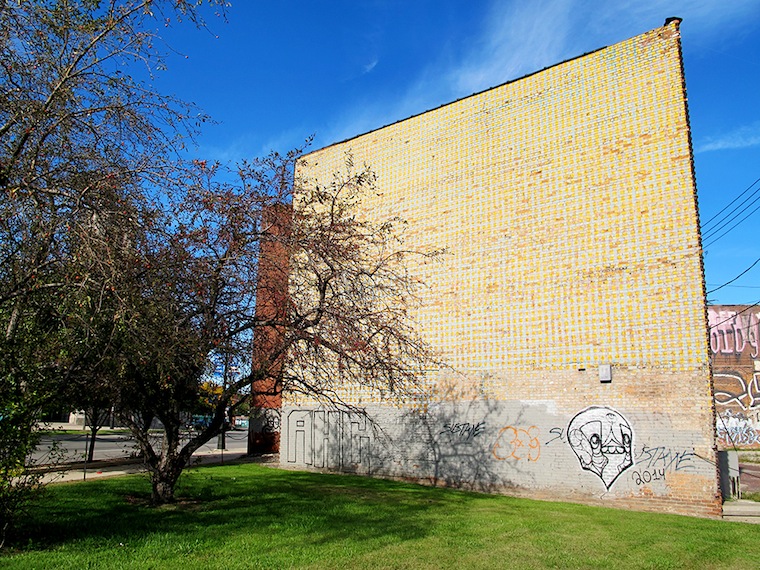
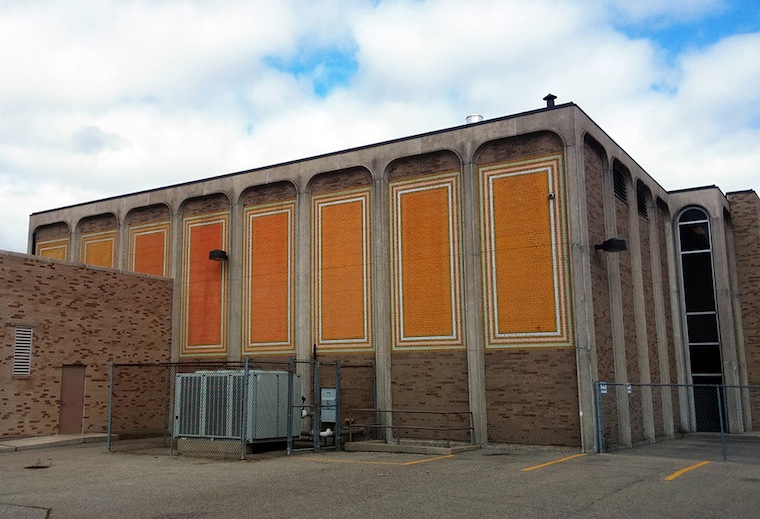


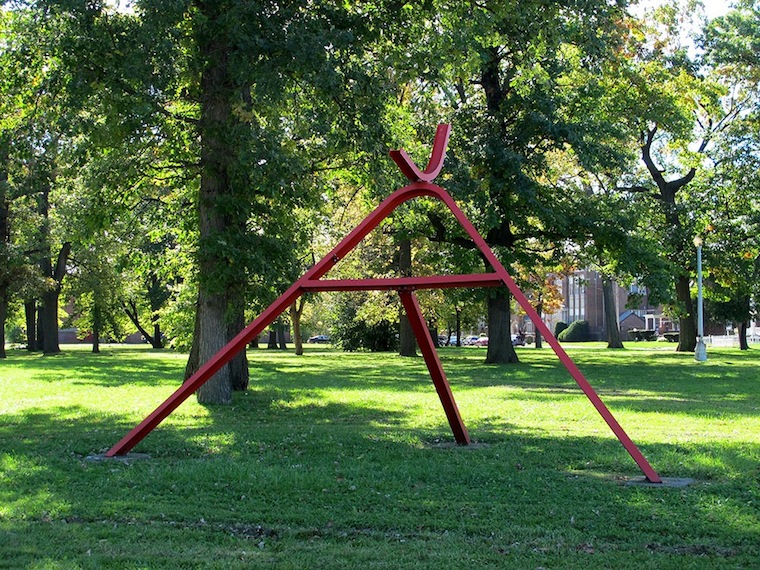
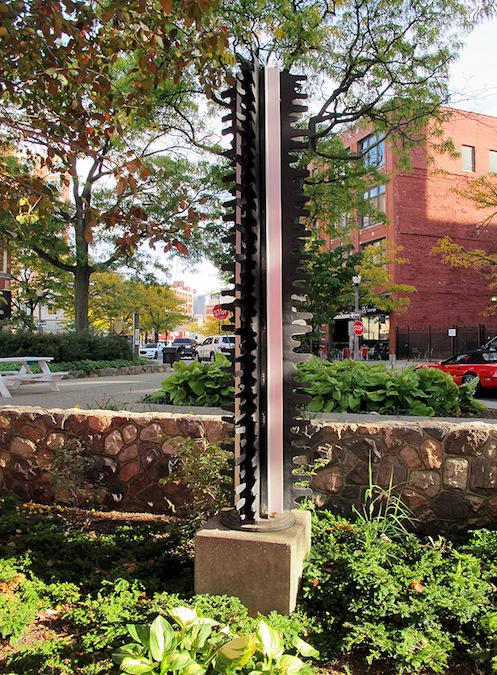
In addition to Color Cubes, the following Living With Art works have been lost over time: an untitled 1972 mural by Roger Mayer on the old Detroit Artists Market Building in Harmonie Park, Lester Johnson's 1973 mural Continuum on an Edison substation at Grand River and Scotten, two 1972 murals on Wyoming in northwest Detroit by Charles McGee and Ed Morais, respectively, and several 1973 murals inside the demolished Detroit General Hospital by Allen Bryant and Allie McGhee.8 9
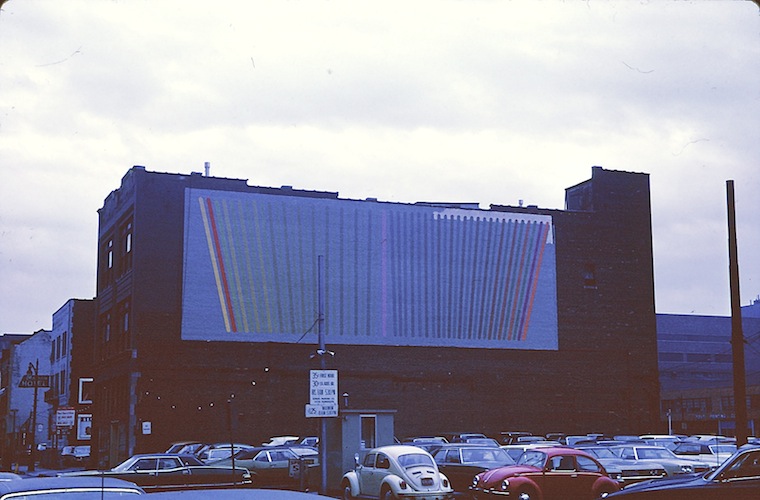
Four decades later, how should Living With Art, which employed public art in the fight against decline and disinvestment in Detroit, be assessed and remembered? As a failure? As an example of large-scale, well-intentioned naivete? As some kind of success?
Michael Hall, who went on to spend twenty years leading the sculpture department at the Cranbrook Academy of Art, remains doubtful about Living With Art's efficacy as a social program:
That was again the idea that if we could somehow do this little artistic facelift, we would affirm something about the resurgence of a civic identity and the resurgence of a city. But it takes more than a snappy design that some sign painters put on the side of a building or a piece of sculpture in Clark Park to do that. I don't think it's a bad idea. It's just not enough.21
Roger Mayer, now professor emeritus of art and semiotics at Brown University, reflects:
A few years after the projects were completed, I recall wondering what such elitist works might engender in the city. Several years later I happened to be at the Detroit Artists Market [the site of his mural, above] and recall asking the parking lot attendant what he thought of that thing up there, without telling him who I was. He answered that he had been looking at it for several years now and that "it suits me pretty good." I suppose that reframed some of my perhaps naive reservations. It brought some pleasure to his life and all who were involved earned some money at all levels. Thus it helped the economy. Perhaps the murals helped ease and ameliorate some of the miseries of those '60s legacies. My initial reservations were ill-founded.
See 1973 , AMBASSADOR BRIDGE , ART APPRECIATION , ART IN ARCHITECTURE , COLOR CUBES , CHARLES MCGEE ,MURALS , NATIONAL ENDOWMENT FOR THE ARTS , NEW DETROIT , PUBLIC ART , and DAVID RUBELLO